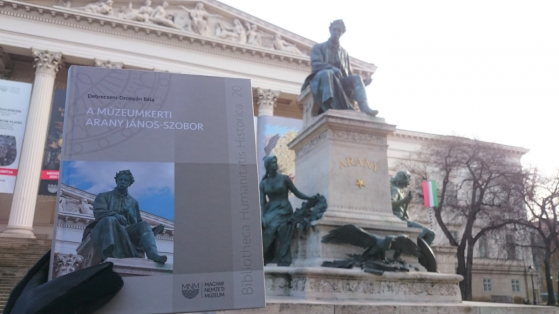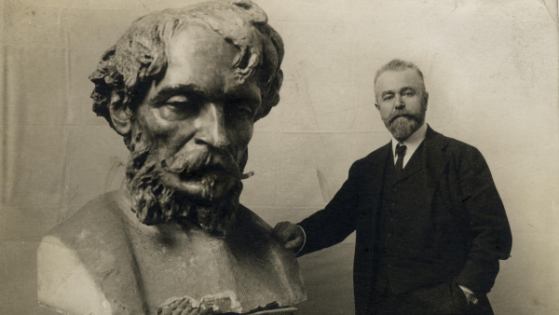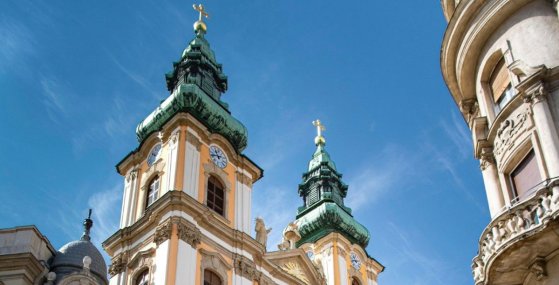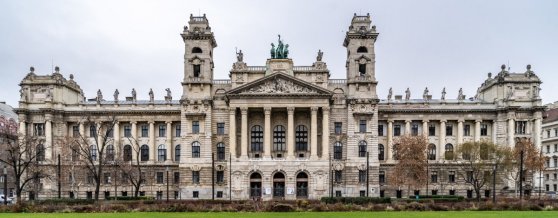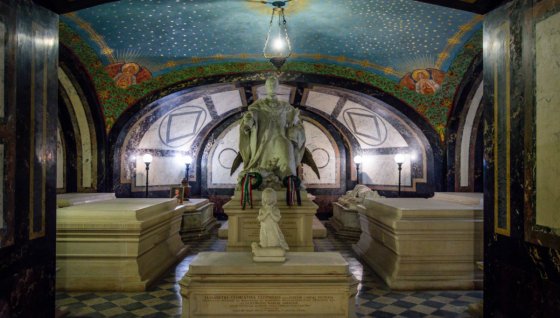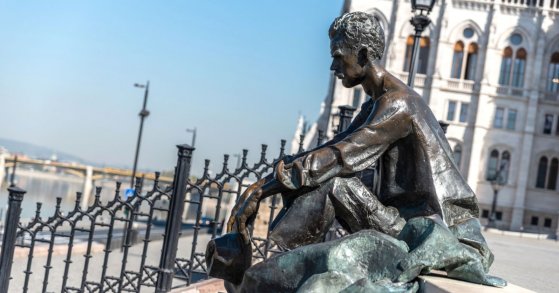 The „intertwined history” of the bridges and the city of Budapest
Which ideas and events have shaped the fate of bridges of Budapest and the cityscape? Alongside many other interesting facts, this question is also answered this newly published book by the Budapest City Archives, which introduces the history of bridges in Budapest.
The „intertwined history” of the bridges and the city of Budapest
Which ideas and events have shaped the fate of bridges of Budapest and the cityscape? Alongside many other interesting facts, this question is also answered this newly published book by the Budapest City Archives, which introduces the history of bridges in Budapest.
György Zala
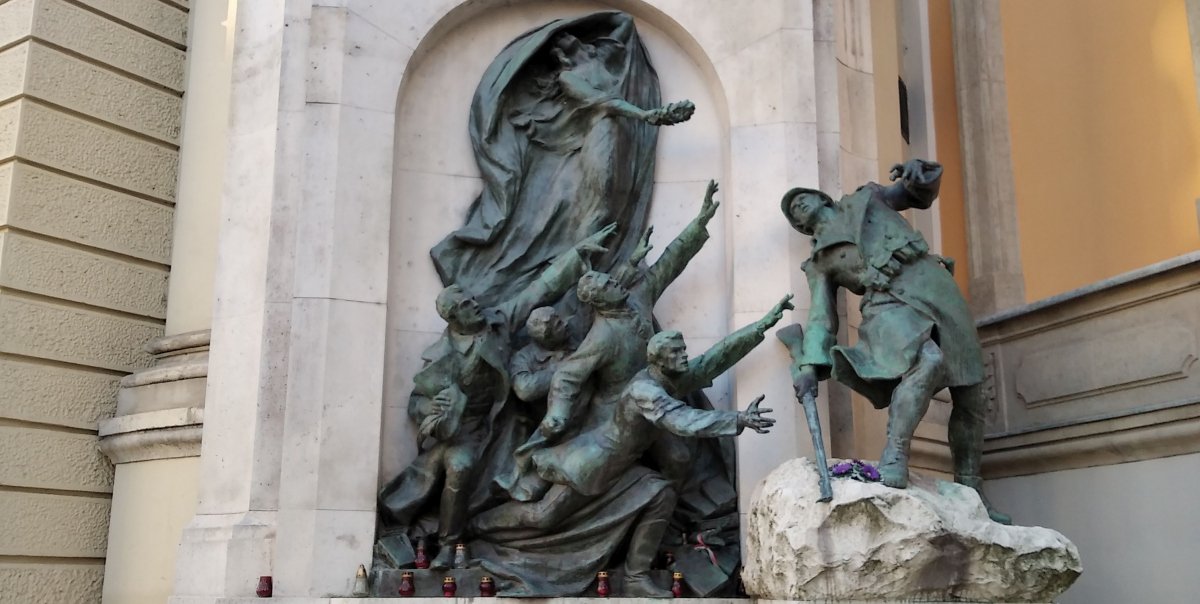 Drama on the university wall - The heroic monument was planned 95 years ago
Drama on the university wall - The heroic monument was planned 95 years ago
March 30, 2023 at 9:00 AM
In the constant hustle and bustle of the Egyetem Square in Pest, the students may not even notice the monument that decorates the short section of wall between the church and the central building of ELTE. However, it commemorates their predecessors, the heroes who fought for their country in World War I, and those who heroically helped them. The first design of the dramatically collapsing soldier was born in 1928, ninety-five years ago.
The meeting of a unique sculptor and the cult of Arany - Description of a period with the help of a 130-year-old famous monument in Pest
January 31, 2023 at 9:00 AM
130 years ago the first public statue of János Arany was inaugurated in front of the main entrance of the Hungarian National Museum. In a new book that has just been published, not only is the entire history of the monument and the adventurous life of its creator, Alajos Stróbl, revealed to the readers, but they can also see how the people of the 19th century thought and debated, what they considered beautiful and right, what they were different from or just similar to people now. The book, which is also rich in images, is both a colourful introduction and an exciting description of a period.
Throughout the city, you can admire the statues of György Zala, who died 85 years ago
August 1, 2022 at 11:30 AM
György Zala owes the central sculpture group of the Millennium Monument on Hősök Square with the Archangel Gabriel to György Zala, as well as the original Andrássy and István Tisza statues in Kossuth Square, or the dignified seated statue of Queen Elizabeth in today's Döbrentei Square. Zala was one of the busiest sculptors of his time, and his legacy has an architectural aspect: his villa in Pest was designed by none other than the master of Art Nouveau, Ödön Lechner.
Art inside the centuries-old walls - the little-known side of the University Church
July 17, 2022 at 9:00 AM
The walls of the University Church have been standing tall in the inner city of Pest for 280 years: the construction of one of the jewels of Hungarian Baroque architecture was finished in 1742, after nearly twenty years. However, this did not mean its completion, as the interior was still completely unadorned at that time. It got its worthy face surprisingly late, only in the middle of the 19th century, which was supplemented with additional details at the beginning of the 20th century- so the church we know today was formed then.
A worthy plot of land for the Palace of Justice has been found opposite the Parliament - The building of the Curia is 125 years old
October 20, 2021 at 9:00 AM
Recently, the name of Alajos Hauszmann has been in the public consciousness, mainly as an architect of the Royal Palace, due to the constructions in the castle, but many other works are also connected to his name in Budapest. One of his most notable and most successful works is the building of the Curia in the Kossuth Square, which was handed over just 125 years ago, on 20 October 1896, in a ceremonial setting, as part of the millennium celebrations.
The Memorial Stone of Heroes was torn down 70 years ago
August 26, 2021 at 11:00 AM
In the shadow of the Millennium Monument, another work is hidden in the Heroes' Square. The Memorial Stone of Heroes symbolises a mass grave, originally erected in 1929, in memory of the soldiers of the First World War resting in anonymous graves, but it was not mourning that was its primary message, but mobilisation against the changing millennial boundaries. The memorial stone was demolished in 1951 but re-erected in the spring of 1956 and then in 2001, in a different form and with new messages.
The most Hungarian Habsburg rests in Buda Castle – A visit to the Palatine Crypt
November 14, 2020 at 9:00 AM
A lesser-known segment of the vast Royal Palace of Buda Castle has housed the final resting place of the Palatine-branch of the House of Habsburg since the Hungarian National Awakening and the Reform Period. The crypt of the Habsburg palatines has remained almost unchanged since the 19h century. Few know that a Habsburg was buried in the crypt in the 2010s. Pestbuda visited the stunning site as part of a tour organised by the National Hauszmann Program before the restrictions announced on 10 November, limiting events entered into force. Join us on a visit to the crypt of the Royal Palace of Buda Castle.
Poetry Day Walk - Statues of the greatest Hungarian poets in Budapest
April 11, 2020 at 10:00 PM
On this year's National Poetry Day, 11 April - the birthday of Attila József - the public, community poem readings, which have already become a tradition, were cancelled, and we could not even visit the statues of the greatest Hungarian poets to show our respect and gratitude. Thus, Pestbuda offers only a virtual walk between the works depicting our national greats in Budapest.
More articles
 The „intertwined history” of the bridges and the city of Budapest
Which ideas and events have shaped the fate of bridges of Budapest and the cityscape? Alongside many other interesting facts, this question is also answered this newly published book by the Budapest City Archives, which introduces the history of bridges in Budapest.
The „intertwined history” of the bridges and the city of Budapest
Which ideas and events have shaped the fate of bridges of Budapest and the cityscape? Alongside many other interesting facts, this question is also answered this newly published book by the Budapest City Archives, which introduces the history of bridges in Budapest.
 The Bridge Report, which brought a turning point in the history of Budapest
A travel report that changed the history of Pest and Buda, as well as Hungary. The little book contributed to the change of half a thousand years of legal customs and the implementation of an investment of unprecedented size and technical quality. This book was The Bridge Report [Hídjelentés in Hungarian].
The Bridge Report, which brought a turning point in the history of Budapest
A travel report that changed the history of Pest and Buda, as well as Hungary. The little book contributed to the change of half a thousand years of legal customs and the implementation of an investment of unprecedented size and technical quality. This book was The Bridge Report [Hídjelentés in Hungarian].
 A message from the former school: An exhibition in memory of János Neumann was opened at the Fasori Secondary School
An exhibition was opened in János Neumann's former school, the Fasori Lutheran Secondary School, on the occasion of the 120th anniversary of the world-famous mathematician's birth. In the exhibition presenting the former Neumann milieu, paintings, graphics, photos, furniture, and objects tell the story of the art-supporting spirit of the noble bourgeois family at the turn of the century.
A message from the former school: An exhibition in memory of János Neumann was opened at the Fasori Secondary School
An exhibition was opened in János Neumann's former school, the Fasori Lutheran Secondary School, on the occasion of the 120th anniversary of the world-famous mathematician's birth. In the exhibition presenting the former Neumann milieu, paintings, graphics, photos, furniture, and objects tell the story of the art-supporting spirit of the noble bourgeois family at the turn of the century.

